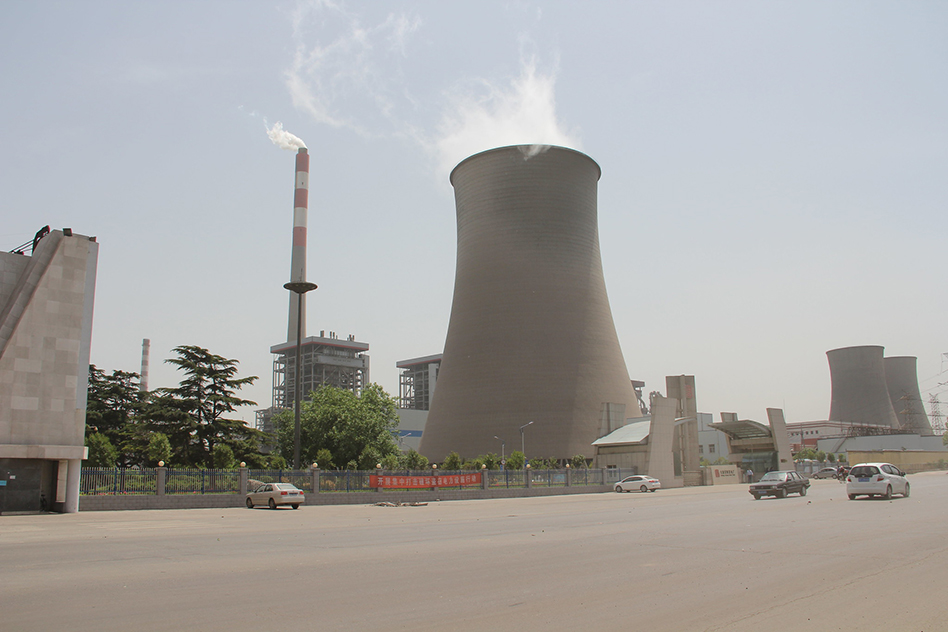
In 2013, more than 100 nations sought to protect human health and the environment from the adverse effects of mercury with the Minamata Convention on Mercury. Two years later, nearly 200 nations aimed to reduce greenhouse gas emissions through the Paris Agreement on climate change. Achieving the goals of both global accords requires addressing common sources of carbon dioxide and mercury, particularly power generation and industrial activities now heavily reliant on fossil fuels. And that begs the question: how might changes in fossil fuel use resulting from a national climate policy under the Paris Agreement help a country reduce mercury pollution, both independently and in concert with policies enacted under the Minamata Convention?
A new MIT-led study investigates that question as it applies to China, the world’s highest emitter of both carbon dioxide and mercury. Appearing in the journal Environmental Science & Technology, the study is the first analysis of the mercury benefits of climate policy in China to evaluate both mercury emissions and deposition impacts from the full range of economic sectors that emit mercury into the atmosphere.
Based on computer simulations to the year 2030, the researchers find that climate policy in China can cut mercury pollution further when combined with policies implemented under the Minamata Convention alone. Under a climate policy consistent with China’s Paris pledge to peak CO2 emissions by 2030, China would reduce an additional 40 metric tons of mercury in 2030 relative to mercury controls alone.
Because climate policies reduce expected fossil fuel combustion, they reduce mercury emissions—but not as much as the end-of-pipe air pollution controls that prevent mercury from entering the atmosphere. Without any controls, the researchers calculate annual emissions would increase to 1150 metric tons by 2030. Climate policies under the Paris Agreement would reduce this to 1035 metric tons, but air pollution controls implemented to meet the requirements of the Minamata Convention have a bigger effect, reducing mercury emissions to 533 metric tons per year. When Minamata Convention and Paris Agreement policies are applied together, however, mercury emissions fall to 490 metric tons per year. A more stringent climate target could reduce a further 20 metric tons of mercury.
“Both mercury and CO2 can cycle through the Earth system for centuries,” says Kathleen Mulvaney, the study’s lead author, a graduate of MIT’s Technology and Policy Program who now works at Rocky Mountain Institute. “Although they are not addressed with the same global treaties, finding ways to peak emissions of both pollutants simultaneously could help save the limited time, money and brainpower available for action.”
To gauge the impact of climate and mercury policies on mercury pollution, the researchers used a model of the Chinese economy (covering 11 economic sectors) that simulates a national carbon price consistent with China’s Paris Agreement pledge and air pollution controls that meet the requirements of the Minamata Convention, along with a global chemical transport model that calculates mercury deposition. Combining climate and mercury policies not only produces additional mercury emissions reductions in the coming decade, but also changes the geographical distribution of mercury emissions and their resulting influence on mercury deposition within and outside of the country.
Differing combinations of economic sectors provide the majority of emissions reductions (and contribute differently to the deposition reductions) depending on whether climate policy, mercury policy, or both are implemented. Climate policy provides emissions reductions in sectors not controlled under the Minamata Convention, such as residential combustion, and also provides reductions beyond end-of-pipe controls in the power and industry combustion sector. These additional emissions cuts translate into less mercury deposition in different places than Minamata Convention policy alone—including the Pacific Ocean and the Arctic.
“Understanding how different policies and strategies interact is important for addressing the multiple sustainability challenges facing the world today,” says study co-author Noelle Selin, an associate professor at MIT’s Institute for Data, Systems and Society and Department of Earth, Atmospheric and Planetary Sciences. “Our work helps to identify actions that can have immediate benefits locally, while simultaneously addressing longer-term, global challenges.”
This research was supported by sponsors of the MIT Joint Program on the Science and Policy of Global Change, and grants from the MIT Environmental Solutions Initiative, the MIT Abdul Latif Jameel Water and Food Systems Lab (J-WAFS) and the MIT Leading Technology and Policy Initiative.
Photo: Coal-fired electric plant, Henan Province, China (Source: Flickr/V.T. Polywoda)

